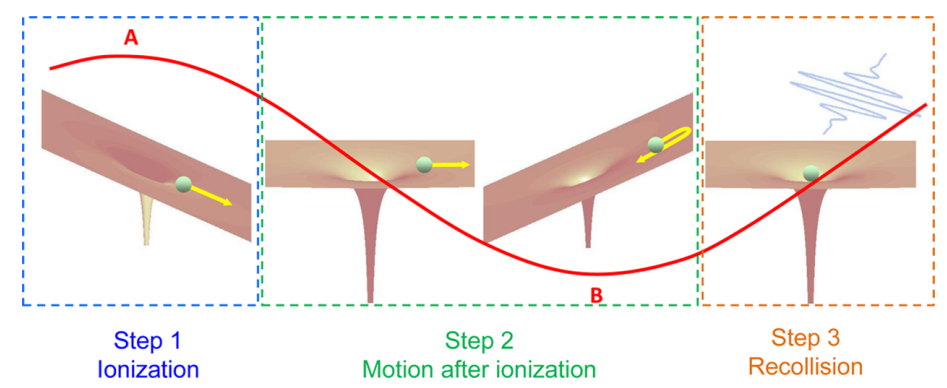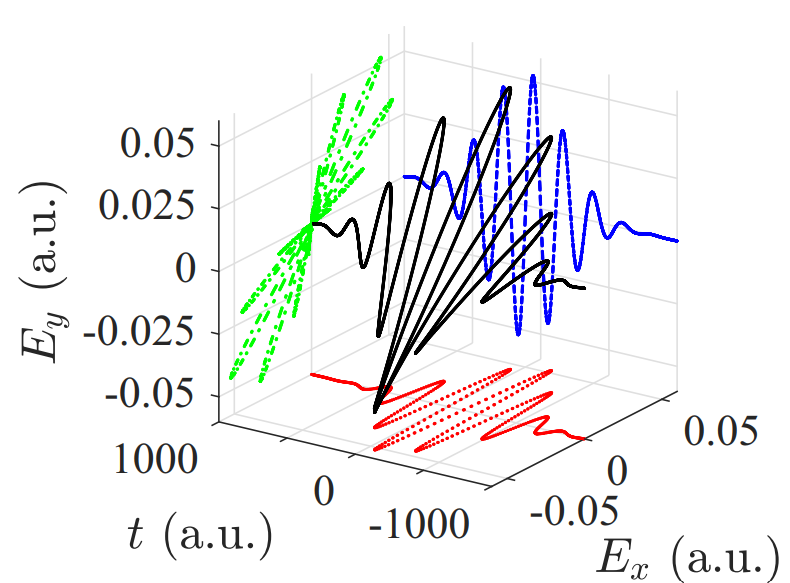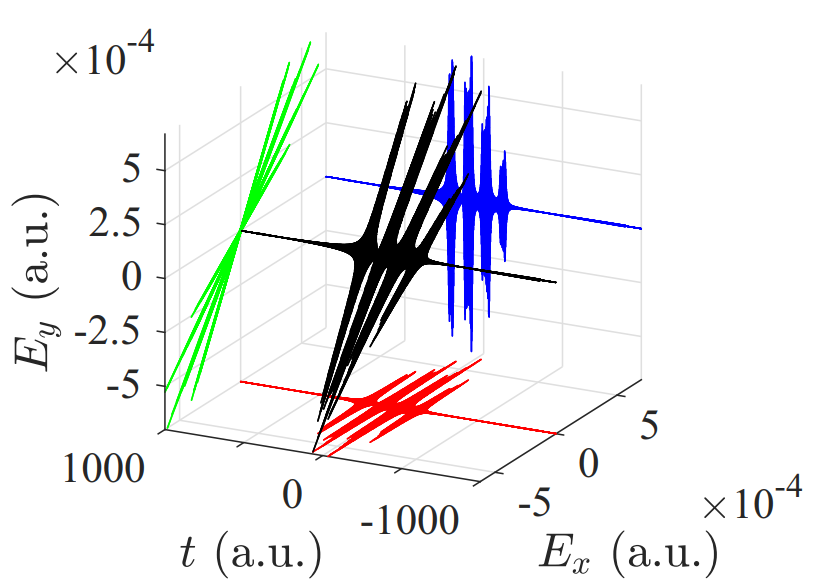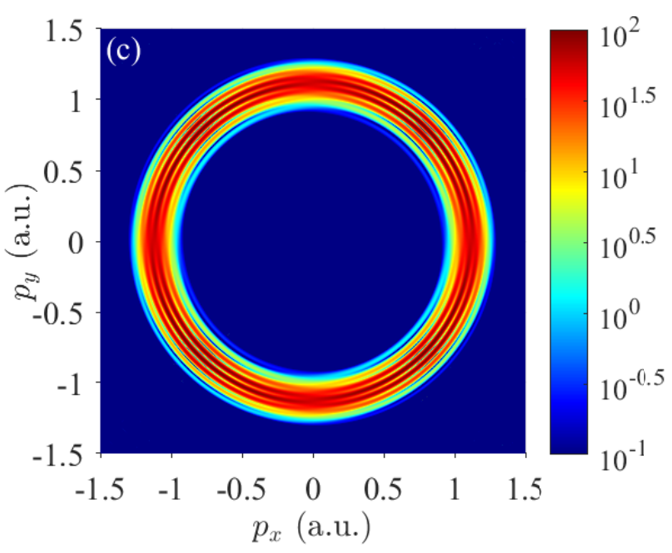Polarization-Skewed Attosecond Laser Pulse Train
Relevant topics: Attosecond Laser, Ultrafast Laser, High-order Harmonic Generation
To capture the ultrafast dynamics in molecular and atomic system, a shorter and shorter laser pulse is needed. The development of attosecond laser pushes the frontier of temporal resolution of measurement. With attosecond (as, 10-18s) resolution, the motion of a single electron in molecule or atom can be observed or even controlled.
The popular way to generate attosecond laser pulse is to make use of High-order Harmonic Gneration (HHG), which is a highly nonlinear effect driven by femtosecond (fs, 10-15s) laser pulse. This process can be easily understood with a three-step model, as shown in Fig. 1. First, the electron is released via tunnel ionization, with the help of a laser field which is strong enough to tilt the Coulomb potential of the nucleus. Then the electron is accelerated by the laser field in free space. After a half optical cycle, the electron will revisit the parent nucleus with a probability of recollision. Such a recollison will emit an attosecond pulse with high photon energy.

Normally a linearly porized driving pulse is needed because otherwise the recollision rate will be very low. However, we designed a laser pulse with polarization slowly varies with time which is called polarization skewed laser pulse. Such a pulse is composed of two linearly polarized pulses in different directions, as shown in Fig. 2. By changing the relative angle of the polarization and time delay between the two pulses, one can change the polarization of the composed pulse. In the case shown in Fig. 2, the polarization of the two pulses is perpendicular to each other and the time delay is one optical cycle (~5.3 fs).

In such a laser pulse, it looks linear within an optical cycle, so HHG efficiency is still high due to high rocollision rate. Between optical cycles, the polarization rotates slightly, so the generated attosecond pulses have different polarization directions, following the driving pulse. The simulation result shows 4 attosecond pulses with different polarization directions as expected (Fig. 3). We call it Polarization Skewed Attosecond Pulse Train (PSAPT)

Such a PSAPT can be used to make time-resolved measurement because the signals from different attosecond pulses are angular seperated. To demonstrate that, we use a PSAPT composed of two pulses perpendicular to each other, as shown in Fig. 4. The photoelectron momentum distibution generated by such a PSAPT is shown in Fig. 5. One can see that the interference fringes are angular dependent. In the direction between two pulses, where the electron wave packets are most overlapped, the fringes have high contrast. While in x and y axis, no interference is found because the wave packets do not overlap there.


From the fringes one can extract the time difference of the two electron wave packets. This method can be used to characterize an unkonwn PSAPT or to investigate the ultrafast dynamics with pump-probe experiment. All the results shown on this page are based on 2D Time-dependent Schrödinger Equation (TDSE) simulation of Hydrogen atom.
This research project was supervised by Prof. Feng He in Shanghai Jiao Tong University
Reference:
- Mauro Nisoli, Piero Decleva, Francesca Calegari, Alicia Palacios, and Fernando Martín. "Attosecond electron dynamics in molecules." Chemical reviews 117.16 (2017): 10760-10825.
- Weizhe Li, and Feng He. "Generation and application of a polarization-skewed attosecond pulse train." Physical Review A 104.6 (2021): 063114.